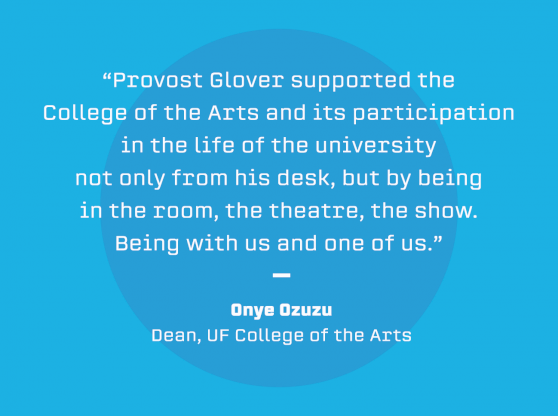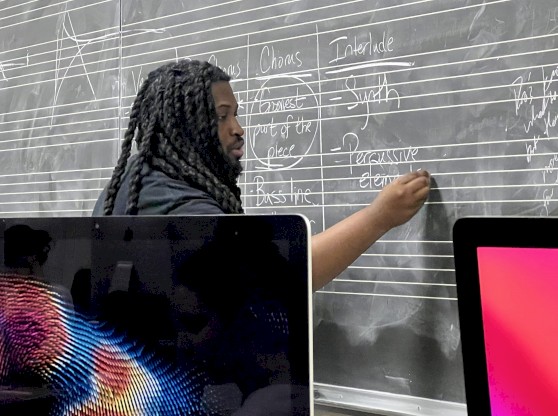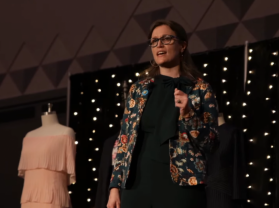Implementation
Pillar III: Shared Governance
The College of the Arts, recognizing the potential power embedded in the concept of shared governance, will facilitate practices and processes where students, staff, and faculty understand the scope, mechanisms, and responsibilities of that power and feel capable of utilizing that knowledge for action in shared governance spaces.
Implementation Highlights
- Year 1 | Completed
- Increase awareness of shared governance.
- Increase and focus participation in shared governance.
- Assess, review, and evolve shared governance processes. By-laws reviewed and revised by CAM, SOM, SOTD, and Graphic Design in SAAH, and developed for Dean's Office; by-laws review in progress for SAAH and DW. FPAC processes reviewed and revised by multiple units.
- Year 2 | Completed
Increase awareness ofshared governance. Faculty Council and Dean’s Office developed and tested a faculty mentorship training. SAAH reviewed mentoring practices with changes to be implemented in 2022-23.
Increase and focus participation in shared governance. SAAH defined the Associate Director role as it pertains to shared governance structures. SOTD completed the first year of an amended Faculty Performance Advisory Committee that includes promoted faculty outside of the tenure track. CAM established the CAM Equity Working Group to advise directors on matters pertaining to curriculum, culture, and operations.
Assess, review, and evolve shared governance processes. Faculty Council developed, presented to the faculty of the college, and approved a variety of constitutional amendments: details for the timing and process of administrator reviews, institution of a term limit for Faculty Council members, revision of the eligibility requirements for Faculty Council members, revision of the term length and limits for Faculty Council Chair, and institution of a Faculty Council Chair-Elect position to facilitate smooth transitions in leadership. SAAH initiated revisions to bylaws and mentoring system. SOTD also revised its bylaws and completed the first year of an amended Faculty Performance Advisory Committee that includes promoted faculty outside the tenure track. CAME began the process of developing bylaws with affiliate faculty members and CAME staff. DW bylaws were reviewed, updated, and ratified by the faculty.
- Year 3 | Completed
Increase awareness ofshared governance. COTA Fall Symposium planning process was overseen by new COTA Creative Campus and College Events Manager who led a year-long evaluation and discussion with COTA faculty and staff resulting in an iterated structure of the 2023 COTA Fall Symposium with an open submission process and Faculty and Staff Council involvement in planning process. COTA Associate Deans updated descriptions of COTA standing and ad hoc committees including details of work and time commitments.
Increase and focus participation in shared governance. SAAH launched new shared governance structures in Studio Art. SOM faculty adopted an SOM Affiliate Faculty process. CAM Internal Advisory Committee of faculty and staff continued its second year of work to provide a check-in opportunity for ideas and topics for the unit from a variety of perspectives.
Assess, review, and evolve shared governance processes. SOTD faculty began revising school-wide mission and vision statements and writing area-specific mission and vision statements. CAME continued developing CAME bylaws. DW faculty and staff ratified Core Values statements published online.
- YEAR 4 | IN PROGRESS
- Increase awareness of shared governance.
- Increase and focus participation in shared governance.
- Assess, review, and evolve shared governance processes.
- Year 5
- Increase awareness of shared governance.
- Increase and focus participation in shared governance.
- Assess, review, and evolve shared governance processes.









